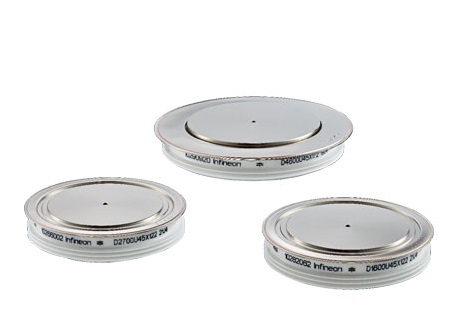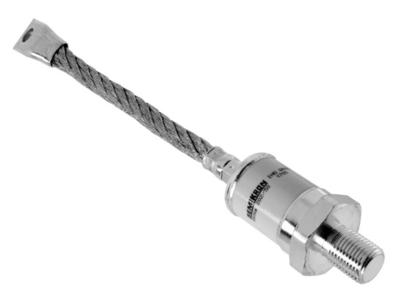Previously in Power Semiconductors. Diodes we defined that the diodes can be divided into diodes with p-n junction and Schottky diodes. However, additionally we can divide diodes with p-n junction into rectifier diodes, fast recovery diodes, avalanche diodes, and transient-voltage-suppression diodes.
Rectifier Diodes
Rectifier diodes are designed to work in rectifier units operating at a relatively low frequency. This is usually an industrial frequency of 50 or 60 Hz. For these diodes, the main focus is on minimizing the power loss in the conductive state while providing a given reverse voltage. The values of reverse recovery charge Qrr and reverse recovery energy losses ERQ for rectifier diodes can be very large, which, as a rule, excludes the possibility of their use at an increased frequency and in pulse-frequency modes.
Fast Recovery Diodes
Fast recovery diodes are the diodes with reduced values of reverse recovery time trr, reverse recovery charge Qrr and reverse recovery energy losses ERQ, designed to operate at high frequencies or in pulse-frequency modes. The reverse recovery charge Qrr value can be reduced by reducing the carrier lifetime τ. This not only increases the proportion of recombination in the process of reverse recovery but also reduces the number of excess electron-hole pairs accumulated during the flow of direct current.
To improve the performance characteristics of diodes, technological methods are used that allow controlling reduction of carrier lifetime τ in its layers. These are doping with heavy metal atoms (gold, platinum, etc.), irradiation with high-energy particles (γ-photons, electrons, protons, alpha particles, etc.). Sometimes methods to control the injection coefficient of the p-emitter creating a “translucent” or “transparent” emitter are used. The essence of these methods also leads to enhanced recombination. However, the area of increased recombination is localized within the emitter layer or on the surface of the semiconductor.
An important type of a fast recovery diode is a “soft” diode with a guaranteed value of S (S-factor) not lower than a certain value. Usually, a diode with S ≥ 1 is considered “soft”.
Also, a popular type of a fast recovery diode is a freewheeling diode. These diodes are installed antiparallel to fully controlled switches like GTOs or IGBTs in autonomous voltage inverters. They are distinguished not only by increased softness but also by the possibility of safe reverse recovery at high values of the commutation rate diR/dt up to several thousand amperes per microsecond.
Avalanche Diodes
Avalanche diodes can operate in an avalanche breakdown mode. Such diodes are usually characterized by the breakdown voltage value Vbr, which makes sense of the minimum value of the beginning of the avalanche breakdown, as well as the energy characteristics of the breakdown: the maximum permissible non-repetitive peak reverse power dissipation PRSM and/or power loss during an avalanche breakdown.
Transient-Voltage-Suppression Diodes
Transient-voltage-suppression diodes (TVS diodes) are the same avalanche diodes, but with an additional characteristic: the maximum value of the reverse voltage in an avalanche breakdown. Thus, this device has the function of a protective element and can protect equipment components connected in parallel from overvoltage. An ordinary avalanche diode does not have such a function, since the maximum value of the reverse voltage in an avalanche breakdown is not standardized for it.


